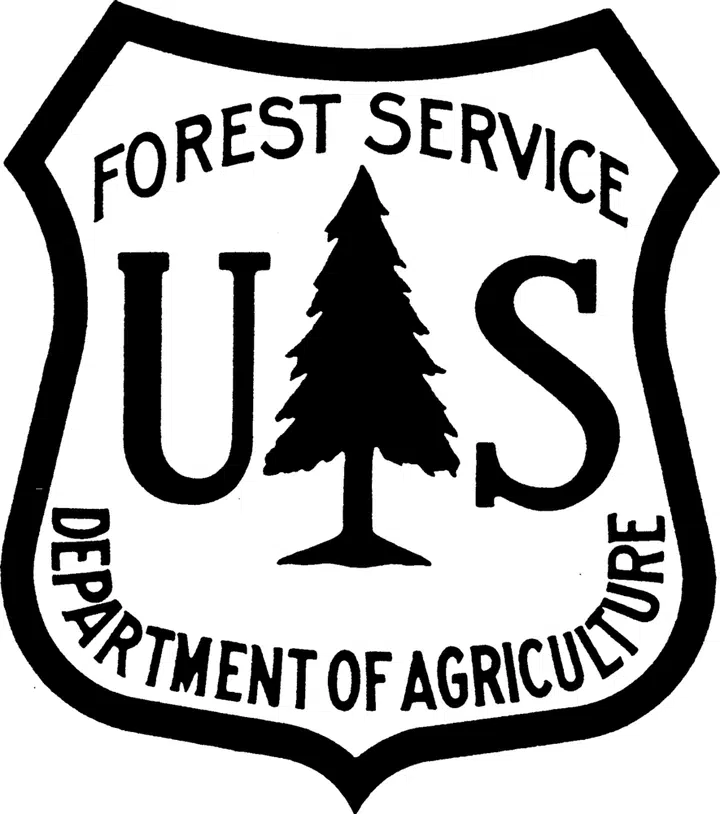
By Rachel Kappler, Great Lakes Basin Forest Health Collaborative (GLB FHC) Coordinator, and Dr. Anna Funk, Science Communication Specialist
Researchers across the country are interested in learning more about forest pests that threaten our native tree species. Populations of eastern hemlock, found across Appalachia, New England, and the Great Lakes, are faced with two different insect pests, hemlock woolly adelgid and elongate hemlock scale, that have killed nearly 80 percent of hemlocks in some areas.
To study the effects of these pests on the trees, and potential mechanisms for resistance, it’s helpful for researchers to have access to hemlock trees from a number of different locations that they can study across their entire lives. At Holden, a new cohort of trees has just germinated that will provide research opportunities for years to come.
Collecting hemlocks
Conservation partners from around the Great Lakes Region collected seeds from hemlocks in their areas and shared them with Holden and the National Seed Lab. This winter at the Gardens, researchers with the Great Lakes Forest Health Collaborative, with the help of Holden volunteers, prepped these seeds for four months of cold storage in the research cold room.
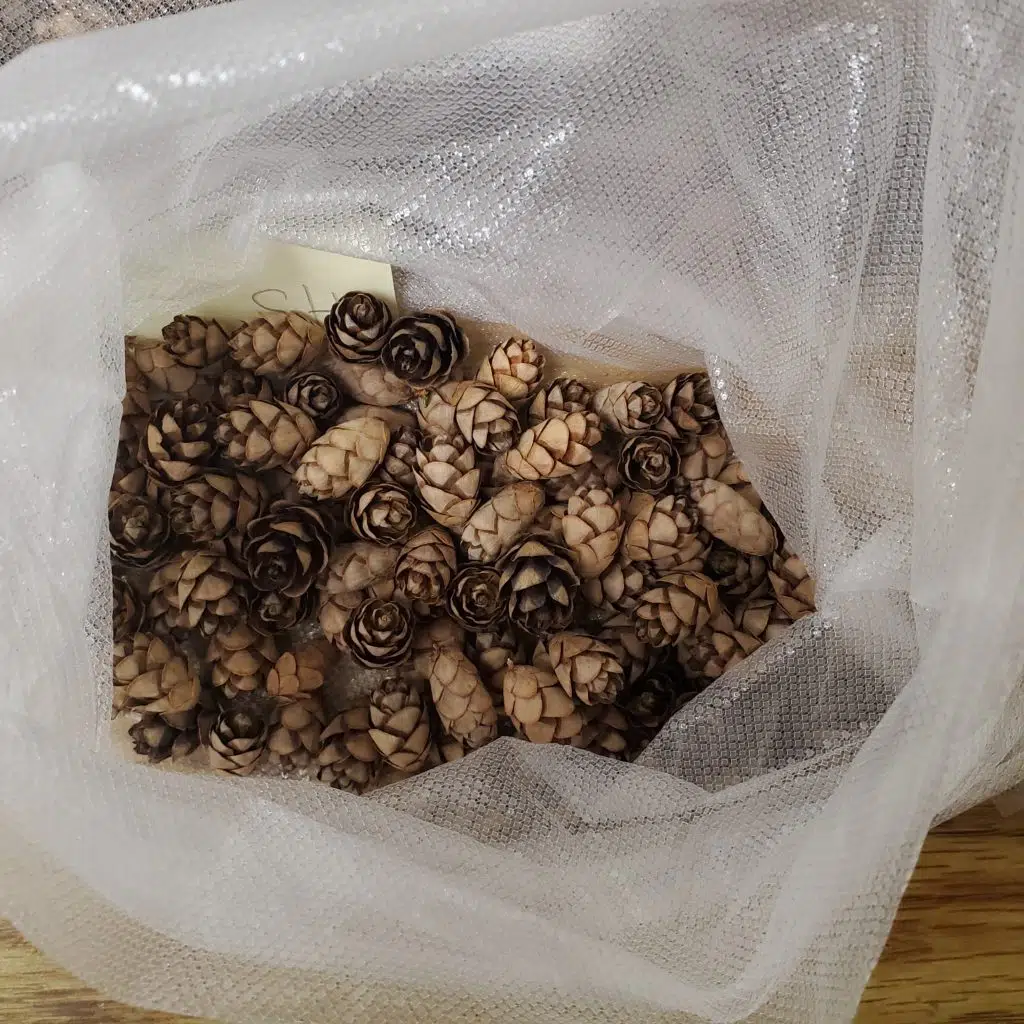
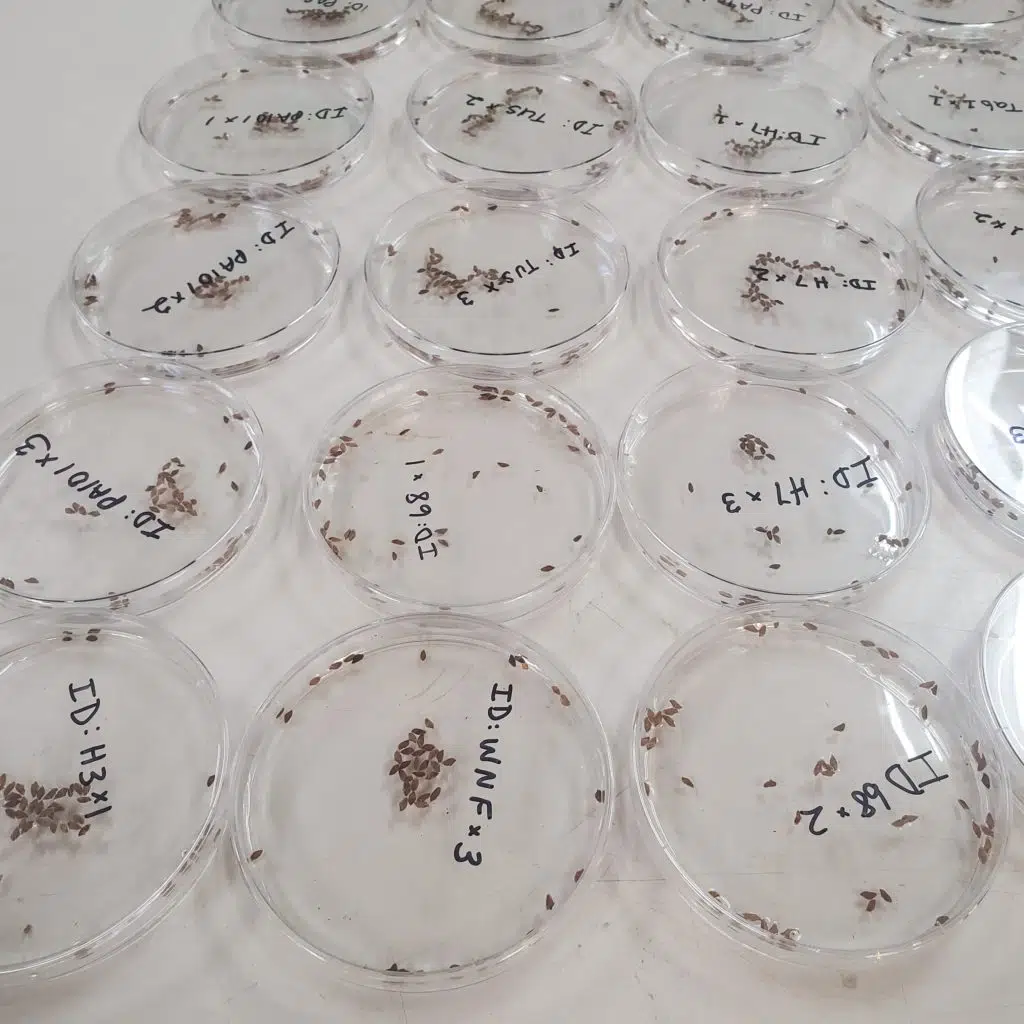
Hemlock seeds — along with many seeds from the plant kingdom — won’t germinate right away, even if they’ve been collected at just the right time. They need to undergo a process called stratification, which in nature happens over the winter. So when seeds are being stored indoors, they need to be kept cold to simulate these conditions to allow them to germinate better and have a higher chance of survival.
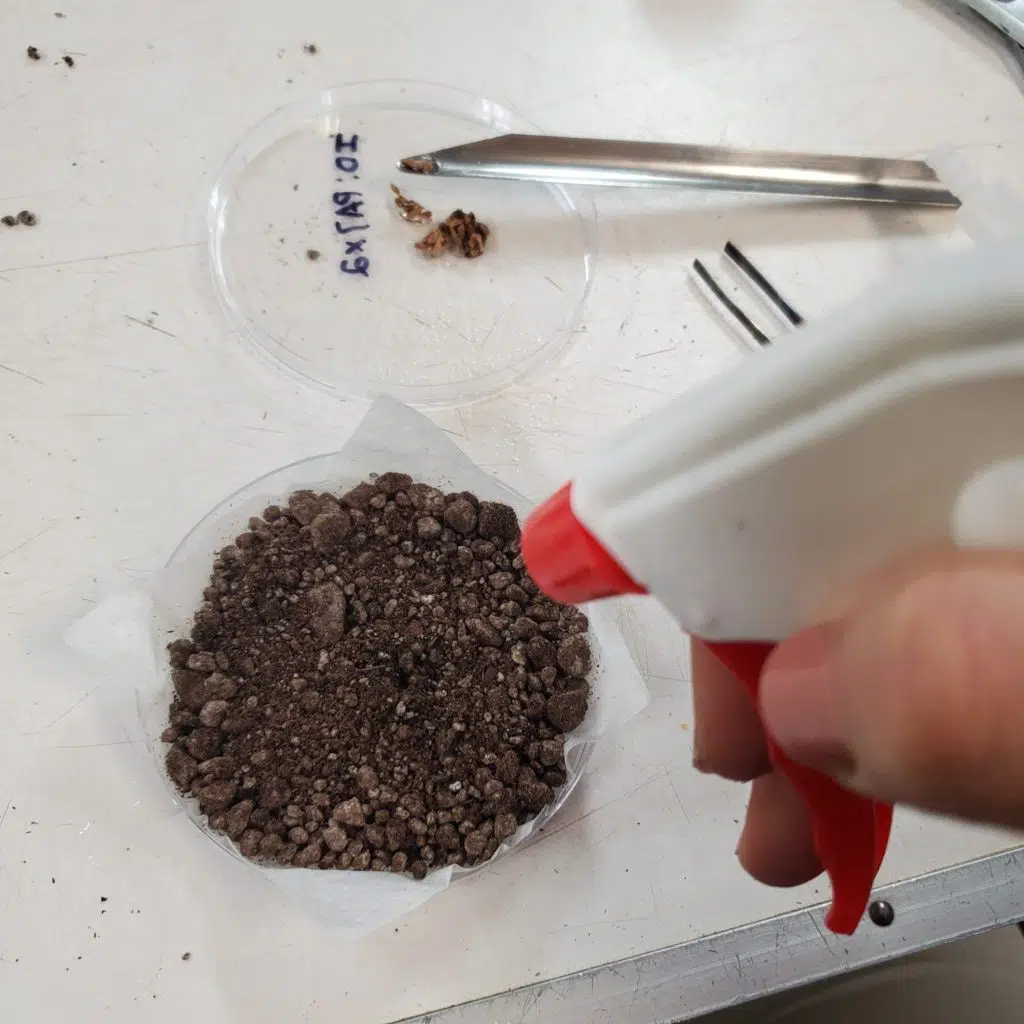
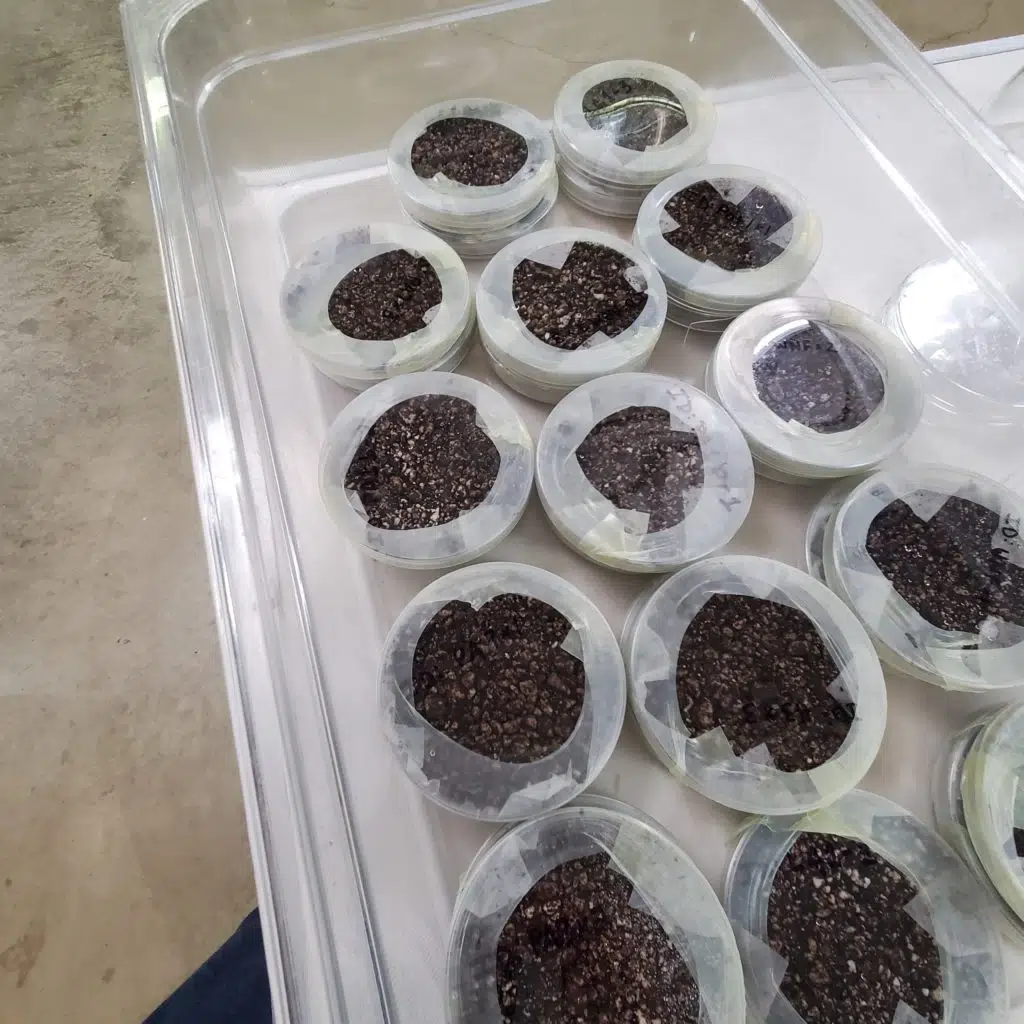
Little seeds, big plans
The seeds have just come out of cold storage and have started to germinate. As the seeds sprout, researchers count them to see if any hemlock groups are germinating better than others.
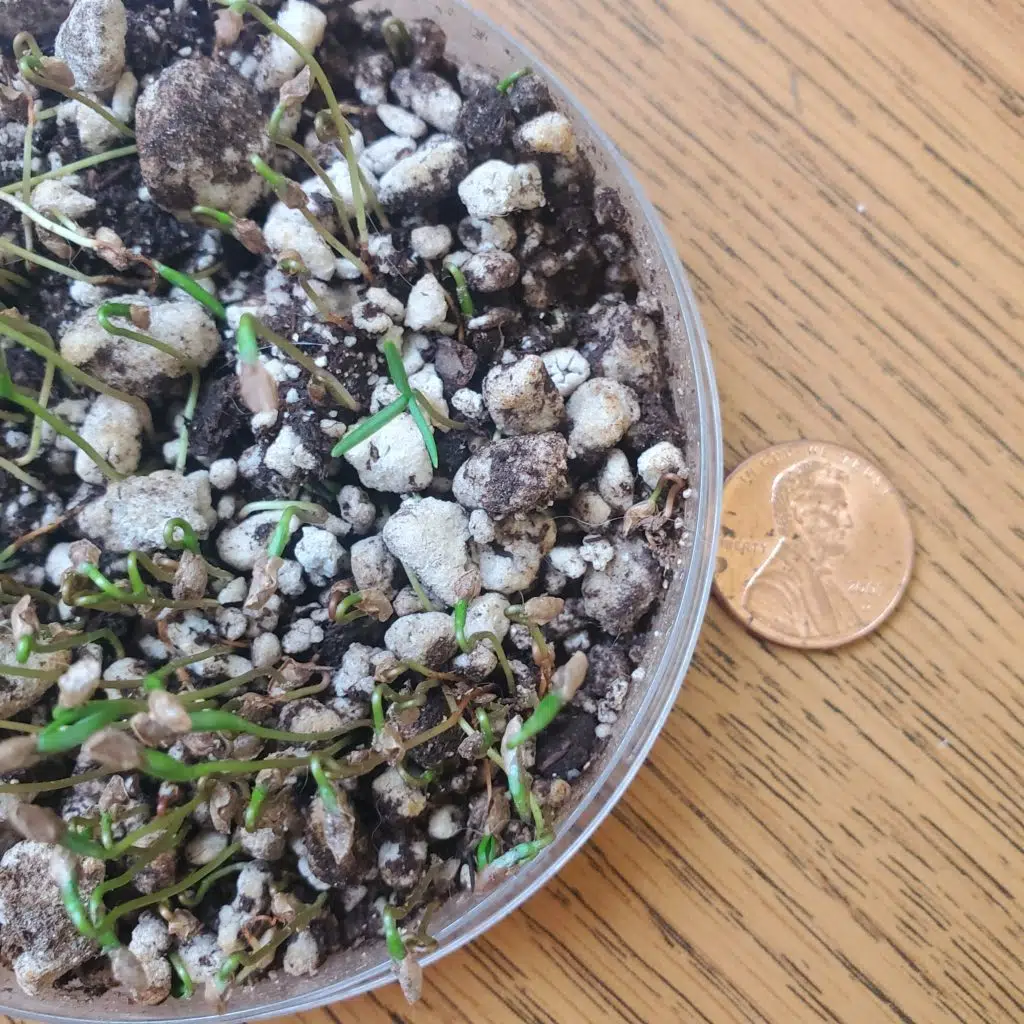
Next, the team will transplant the seedlings into pots to raise them for further research. These trees will be vital to a wide variety of research about hemlock woolly adelgid and elongate hemlock scale that will help protect our forests from these pests.
—
Want to stay up-to-date on the latest forest health news and research? Subscribe to the Great Lakes Basin Forest Health Collaborative email newsletter!
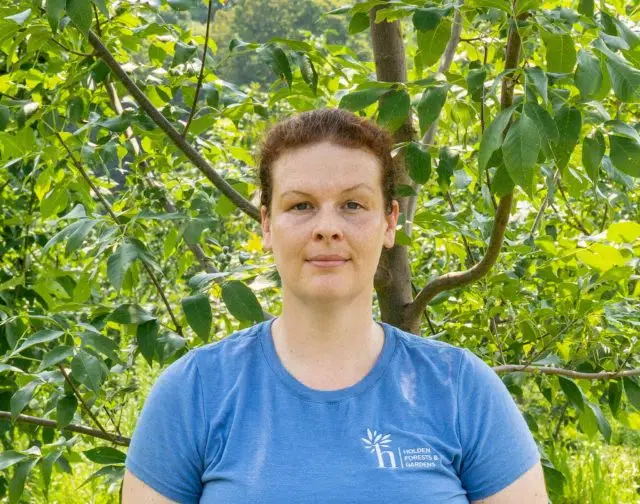
Rachel Kappler, PhD
Great Lakes Basin Forest Health Collaborative (GLB FHC) Coordinator
Rachel Kappler is the coordinator for partners of the Great Lakes Basin Forest Health Collaborative. She helps facilitate partners tree activities for pest-resistance breeding in current priority species, ash, American beech, American elm and eastern hemlock. She also hosts workshops, webinars, and training for partners to help them achieve their forest health goals.










